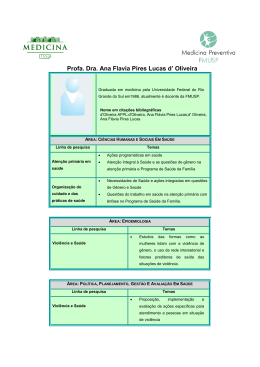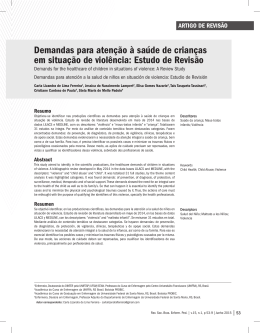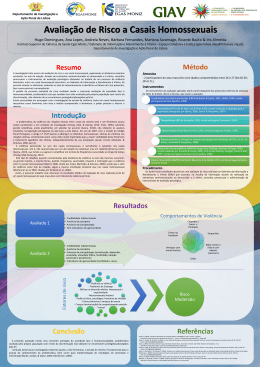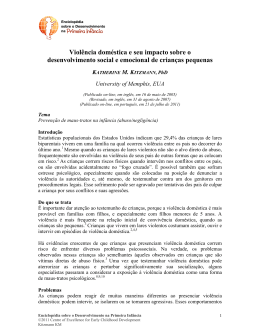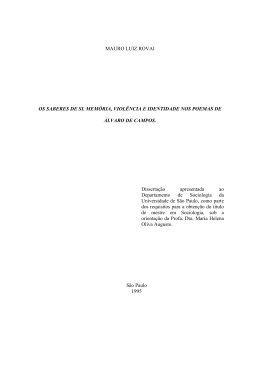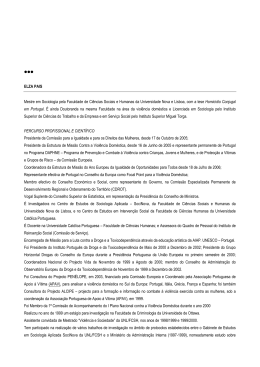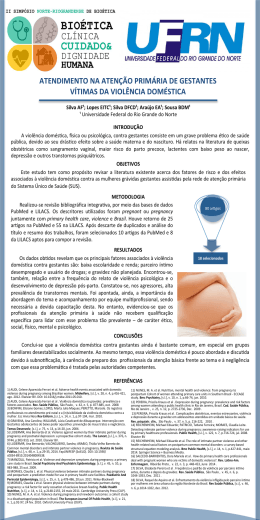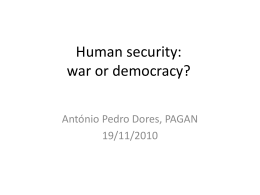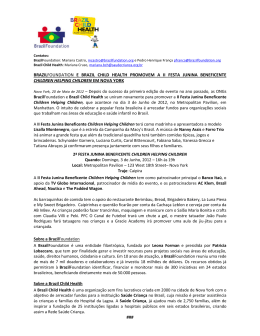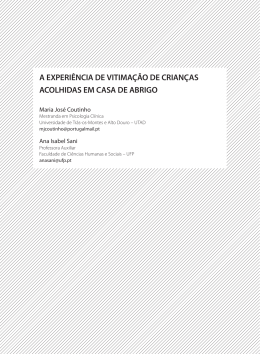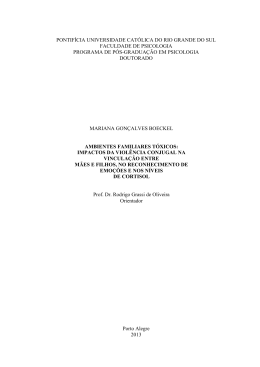Autor: NINA ROSA DE OLIVEIRA MARTINS Título: DETECÇÃO DA VIOLÊNCIA FAMILIAR CONTRA A CRIANÇA NA POPULAÇÃO ADSCRITA AO PSF/LAPA - RJ Data da defesa: 20/04/2007 Orientador: Profª Drª CLAUDIA LEITE MORAES RESUMO Introdução: O artigo estima a prevalência de violência psicológica, utilização de castigo corporal e violência física contra a criança entre as famílias cadastradas ao Programa Saúde da Família em área urbana do município do Rio de Janeiro. Além de estimar a magnitude, o estudo identifica os principais perpetradores das várias formas de violência, a periodicidade e a distribuição das ocorrências em subgrupos populacionais classificados de acordo com as características sócio-demográficas e relativas à saúde das crianças e suas famílias. Métodos: Através de inquérito domiciliar, todas as famílias com crianças menores de 10 anos de idade (154) cadastradas no PSF-LAPA foram entrevistadas entre julho e novembro de 2006. As informações de interesse foram colhidas utilizando-se um questionário estruturado multidimensional, através de entrevistas face-a-face com as mães (ou principal responsável) e os indivíduos que permaneciam mais tempo com as crianças (cuidadores). Para caracterização da situação econômica das famílias, utilizou-se o Critério de Classificação Econômica Brasil (ABEP, 2003). Para a identificação da violência familiar, utilizou-se o instrumento “Conflict Tactic Scales: Parent-Child Version” – CTSPC (1,2) . A criança foi considerada um caso de violência quando pelo menos um dos itens das respectivas escalas foi declarado positivo. Assumiu-se uma distribuição binomial para a estimação dos intervalos de confiança. O teste qui quadrado foi utilizado para se avaliar as diferenças entre as prevalências nos diferentes estratos das variáveis de interesse. Resultados: A prevalência da violência familiar contra a criança foi alta, com a agressão psicológica ocorrendo em 93,6% dos lares. O castigo corporal foi referido por 84,6% das mães entrevistadas, a violência física de qualquer natureza foi declarada por 39,1% dos respondentes e a agressão física grave contra a criança por 9,0%. As mães mostraram-se mais agressivas do que os pais em todas as dimensões avaliadas. A maioria das crianças sofre situações de agressão psicológica e de castigo corporal de ambos os pais. A maior parte dos itens positivos de cada uma das escalas foi perpetrada mais de uma vez no ano anterior à pesquisa. Apesar de presente nos vários subgrupos populacionais, a violência física foi mais freqüente entre crianças com mais de seis anos, entre as que têm pai ou padrasto com escolaridade inferior ao segundo grau completo, cujos pais têm mais de 25 anos, nas que têm algum problema de saúde atual ou história de internação anterior; entre aquelas em famílias de baixa renda e nas que utilizam regularmente o PSF. Conclusões: Os Resultados encontrados reforçam a necessidade do estabelecimento da violência familiar como questão prioritária na atuação do PSF. Palavras-chave: Violência familiar. Violência contra a criança. Prevalência. Inquérito populacional. Programa de Saúde da Família. _________________________________________________________________________ (1) Straus MA, Hamby SH, Finkelhor D, Moore DW, Runyan D. Identification of child maltreatment with parent-child conflict tactics scales: development and psychometric data for a national sample of American parents. Child Abuse Neglect 1998; 22:249-270. (2) Reichenheim ME, Moraes CL. Adaptação transcultural do instrumento "Parent-Child Conflict Tactics Scales (CTSPC)" utilizado para identificar a violência contra a criança. Cad Saúde Pública 2003; 19:1701-1712. ABSTRACT Introduction: The article refences to the prevalence of psychological violence, corporal punishment and physical violence against children among families registered in the Health Family Program in the urban área of the Rio de Janeiro city. Besides evaluating magnitude, it identifies the main perpetrators of several forms of violence, the frequency and the distribution of the events in subgroups, which were classified in accordance with the features social-demographics and relative with the children and their family´s health. Methods: Household survey including all families with children under ten years old (154) registered in the Health Family Program in the Lapa (PSF-Lapa) from July to November 2006. Information colected from a multidimensional questionnaire used to interview the mothers (or main responsible) face-to-face and the individuals that spend more time with the children (cuidador). The instrument “Conflict Tactic Scales: Parent Child Version” – CTSPC(1,2) was used for the identification of the family violence. The Criterion of Economic Classification of Brazil (ABEP, 2003) was used to range the economic situation of the families. A child was considered in a violence case when at least one of itens of the respective scales was declared positive. A binomial distribution was considered for the confidence interval. The test “X 2” was applied to evaluate the differents ranges of the resulted variable of interest. Results The prevalence of the familiar violence against the child was high, with the psychological aggresion occurring in 93,6% of the homes. The corporal punishment was related by 84,6% of the interviewed mothers, the physical violence of any natures was declared by 39,1% of the respondents and serious psychological aggression by 9,0%. The mothers revealed to be more aggressive than the fathers in all evaluated dimensions but corporal punishment and psychological aggression against children come from both parents. The frequency of positive items in each scale happened more than once in the previously year of the survey. Although the violence is presented in several subgroups of the population, the frequency of physical violence was higher between children older than 6 years, whose father or stepfather did not finished high school, with fathers older than 25 years, in children that have presented health problems in the year of the survey (or previous ones), presenting financial problems and frequent use of Health Family Program (PSF). Conclusion: The results of the survey reinforce that family violence is a top priority subject to PSF scope of work. Key words: Family violence. Child abuse. Prevalence. Populational survey. Family health program. CTSPC References: (1) Straus MA, Hamby SH, Finkelhor D, Moore DW, Runyan D. Identification of child maltreatment with parent-child conflict tactics scales: development and psychometric data for a national sample of American parents. Child Abuse Neglect 1998; 22:249-270. (2) Reichenheim ME, Moraes CL. Portuguese-language cross-cultural adaptation of the Parent-Child Conflict Tactics Scales (CTSPC)", an instrument used to identify parental violence against children. Cad Saúde Pública 2003; 19(6):1701-1712.
Download

